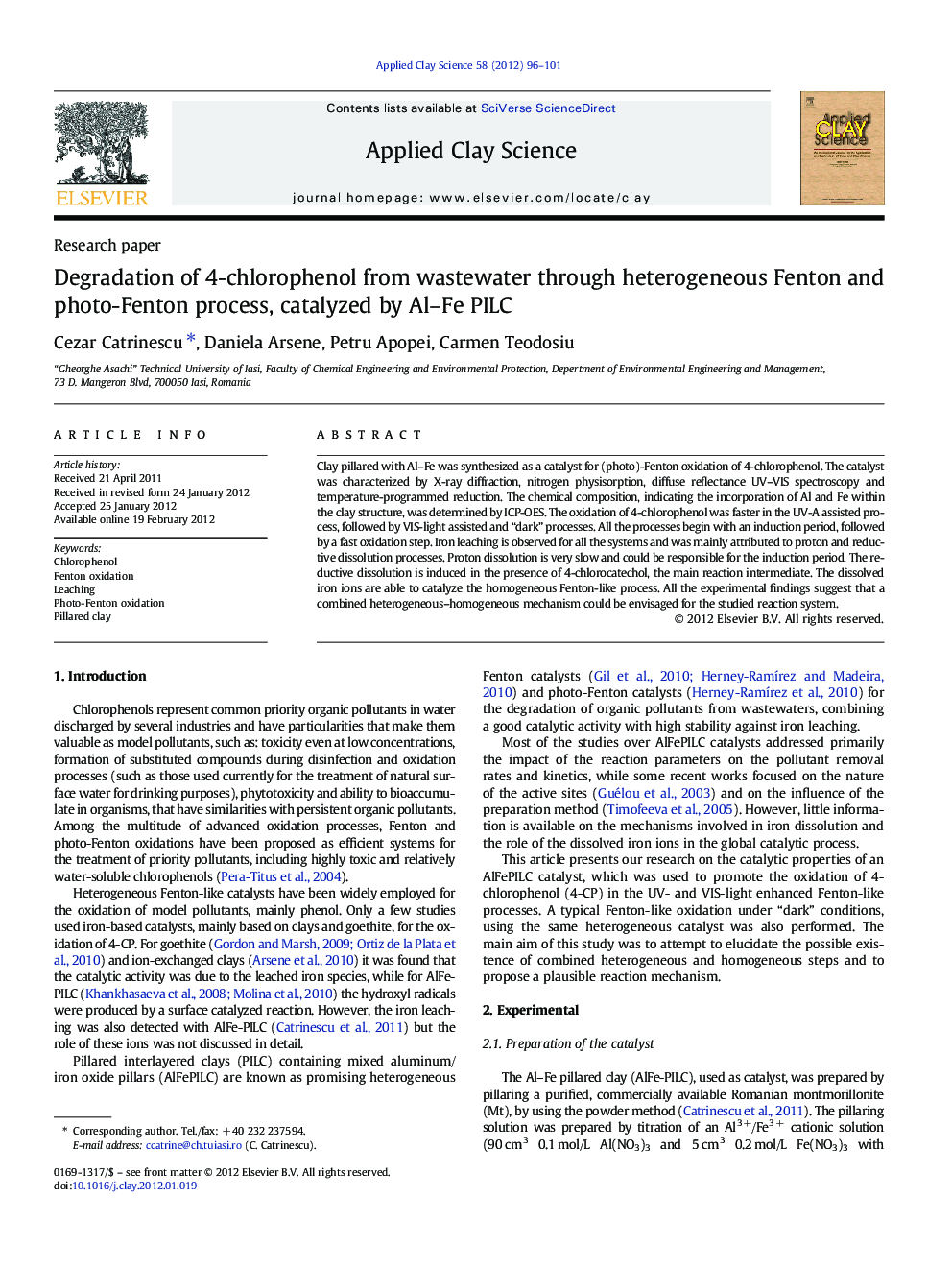| Article ID | Journal | Published Year | Pages | File Type |
|---|---|---|---|---|
| 1695308 | Applied Clay Science | 2012 | 6 Pages |
Clay pillared with Al–Fe was synthesized as a catalyst for (photo)-Fenton oxidation of 4-chlorophenol. The catalyst was characterized by X-ray diffraction, nitrogen physisorption, diffuse reflectance UV–VIS spectroscopy and temperature-programmed reduction. The chemical composition, indicating the incorporation of Al and Fe within the clay structure, was determined by ICP-OES. The oxidation of 4-chlorophenol was faster in the UV-A assisted process, followed by VIS-light assisted and “dark” processes. All the processes begin with an induction period, followed by a fast oxidation step. Iron leaching is observed for all the systems and was mainly attributed to proton and reductive dissolution processes. Proton dissolution is very slow and could be responsible for the induction period. The reductive dissolution is induced in the presence of 4-chlorocatechol, the main reaction intermediate. The dissolved iron ions are able to catalyze the homogeneous Fenton-like process. All the experimental findings suggest that a combined heterogeneous–homogeneous mechanism could be envisaged for the studied reaction system.
Graphical abstractFigure optionsDownload full-size imageDownload as PowerPoint slideHighlights► 4-chlorophenol is completely oxidized on AlFePILc as solid Fenton-like catalyst. ► The process could be improved by using VIS-light or by UV radiation. ► The global process occurs through a combined heterogeneous/homogeneous mechanism. ► Proton and reductive dissolution are responsible for the iron leaching process. ► The dissolved iron ions are able to catalyze the homogeneous Fenton-like process.
